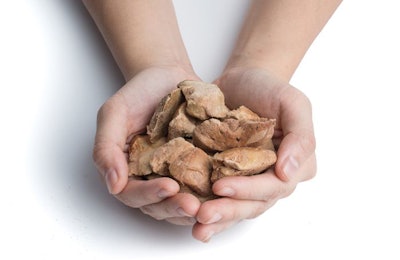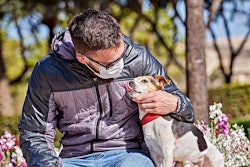
Sales of non-traditional pet food formats – raw frozen, refrigerated, freeze-dried – are still growing faster than the more conventional dry kibble and wet formats and have rebounded more quickly in the wake of pandemic-driven spikes and drops in sales. That’s definitely the case in the U.S.; and in markets like Australia, raw pet food has a higher acceptance rate than in larger markets such as the U.S., the U.K. and Canada.
This data and information come from new research and market reports highlighting the gradual shift of consumer interest and purchases to categories outside of traditional dry and wet pet food.
Conventional dry and wet pet foods still rule
To be clear: Conventional pet food formats still reign, particularly dry kibble. In a survey of 3,673 pet owners in the U.S., Canada, U.K., Australia and New Zealand, researchers at the University of Guelph found that 79% of dog owners and 90% of cat owners fed conventional pet foods (though only 13% and 32%, respectively, fed those diets exclusively).
In the U.S. specifically, 87 to 88% of cat and dog owners feed dry pet food, according to a survey conducted earlier in 2020 by Packaged Facts. In addition, 66% of cat owners and 49% of dog owners said they provide wet or moist pet food in cans or pouches – seeming to support the practice of feeding more than one kind of food. David Sprinkle, publisher and research director for Packaged Facts, reported the data during his Petfood Forum CONNECT session on September 10.
In another session, on September 9, Sean Simpson, associate client director for Nielsen, shared detailed U.S. sales data for different pet food categories and formats. As is well known by now, sales of all pet food spiked significantly in March, as lockdowns were announced and pet owners stocked up. That was followed by a decline – not as large as the spike, but still down by -2.6% (treats) to -6.9% for wet pet food and as much as -17.8% for dry. By June, sales of treats and wet food were flat or growing again and had fully rebounded by July. Growth rates were even higher in August, at 7.7% for wet food and 9.5% for treats.
Yet sales of dry pet food continue to decline, still down -6.3% as of August. Simpson believes that’s at least partially because pet owners’ stockpiles of dry pet food were bigger and, thus, have lasted longer. In fact, the largest sales spikes in March occurred for the largest dry food packages: 32.8% for bags 28 pounds or more.
All that sales data above applies to brick-and-mortar outlets, including mass market and pet specialty. For pet food e-commerce in the U.S., year-over-year (YOY) sales have continued to grow through July, the last month for which full data is currently available, according to Simpson, who sourced his data from Rakuten. Growth rates may not be as heady as they were in March, when they hit 82.5% for dry, 88.2% for wet and 66.9% for treats, yet in July, they still registered at 48.4%, 58.4% and 58.5%, respectively.
The continued growth in pet food e-commerce makes sense given that more consumers are now shopping online either exclusively or more regularly than before the pandemic.
Look at raw, frozen, freeze-dried pet food
Despite the continuing popularity and sales of conventional dry and wet pet food, other formats are definitely gaining pet owners’ attention and, to a lesser but consistently increasing extent, their wallets. In the University of Guelph study of owners in those five predominantly English-speaking countries, a surprising 66% of dog owners and 53% of cat owners said they feed raw pet food, at least some of the time.
It’s not really clear from the study abstract whether use of the term “raw” was at the respondents’ discretion or was somehow explained in the survey questionnaire. Regardless, Australia had the highest rate of feeding raw pet food, according to study co-author Sarah Dodd, DVM, of the University of Guelph, which is consistent with previous research, she added. “The common phrase ‘BARF’ that is used to refer to bones and raw food, or biologically appropriate raw food, was coined in Australia by a veterinarian considered as the founder of the BARF movement,” she said. “This suggests a potential cultural, as opposed to a practical, reason for the preference for raw food.”
Diving into U.S. data again, Packaged Facts’ pet owner survey showed 18% strongly agreeing with the statement, “I like the idea of new types of pet food other than traditional dry/kibble or wet/canned,” with 33% somewhat agreeing. Further, 34% strongly agreed and 42% somewhat agreed with the statement, “Less processed foods are healthier for my pets.” The less conventional formats are often perceived as being less processed, Sprinkle said.
How sales of newer pet food formats stack up
Yet, are those sentiments and views backed up by sales? Currently, newer formats still account for small shares of the market, according to Simpson. For example, in the U.S. mass market brick-and-mortar channel, kibble plus pet foods (dry kibble with freeze-dried or dehydrated pieces mixed in) represent only 0.1% of the premium dry food segment, with 100% freeze-dried or dehydrated not even registering a share. Not surprisingly, the shares are somewhat higher in the pet specialty channel, at 9.5% for kibble plus, 2.4% for 100% freeze-dried and 1.4% for all dehydrated.
A slightly different picture emerges for premium wet foods. In mass market, refrigerated pet food enjoys a 6.3% share and frozen, 0.1%. In pet specialty, it’s 3.5% and 14%, respectively.
Alternative wet pet foods have also been the growth stars, never seeing any sales declines this year. In the mass market channel, refrigerated pet food leapt 51.7% YOY in March, compared to 23.4% for shelf-stable wet pet food. While shelf-stable declined in April and has slowly built up to 6% growth in August, refrigerated saw only smaller growth rates, down to 13% in April but bouncing back up to more than 20% by May and building up to 44.1% YOY in August – not that far off the March spike.
In pet retail, frozen has consistently grown in sales, achieving 44.3% in March, down to a 4.2% increase in April and leveling off at about 13% YOY in August. Refrigerated has had a more mixed sales history: up 22% in March, declining by -17.1% in April but starting to grow again in June and soaring up 25% YOY by August. In comparison, shelf-stable wet pet food in pet specialty increased 18.6% in March, followed by a larger decline in April, of -23.7%. It only again achieved positive growth in August, at 3.2%.
For premium dry pet food, Simpson provided data for the pet specialty channel only, considering the extremely low or non-existent shares for freeze-dried and dehydrated products in mass market. Perhaps in keeping with pet specialty’s overall falloff, with both mass market and e-commerce siphoning off its sales, only freeze-dried dry pet food has regained sales growth since the post-March decline. After rising 37.2% YOY in March, sales of freeze-dried dropped -5.8% in April, were flat in May but growing again by June and increasing 13.3% in August.
In contrast, all other types of premium dry pet food – shelf stable, kibble plus and dehydrated – had larger declines YOY in pet specialty after the March spike and, as of August, were still in negative territory.
View our continuing coverage of the coronavirus/COVID-19 pandemic.


















